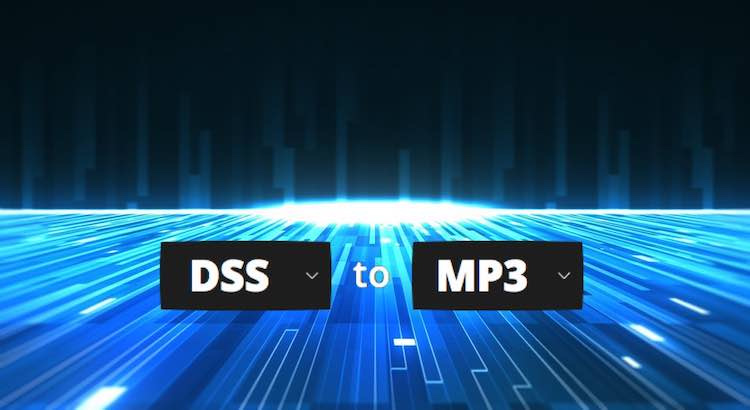Understanding DSS Files: What You Need to Know
DSS (Digital Speech Standard) files are digital audio files created by voice recorders or speech recognition programs. Developed for professionals, these files are common in sectors like law, healthcare, and business. Their small file size and high audio quality make them ideal for storing and sharing voice notes and recordings (DSS Consortium, 2012).
Key Features of DSS Files
- Highly Compressed: DSS files use special compression technology for small file sizes.
- High Audio Quality: Despite the compression, they maintain clear voice quality.
- Professional Use: Popular among legal, medical, and administrative professionals.
- Metadata Support: These files can include extra information such as author or job details.
Advantages of DSS Files
- Efficient Storage: Their small size allows you to keep hundreds of files without using much space.
- Faster Transfer: Small file sizes help send audio clips through email or online platforms quickly.
- Large Batch Processing: Easy to organize and work with many files at once.
- Metadata Storage: Keep useful details with each recording for better management.
A 2022 report showed that digital dictation with DSS files improved workflow speed for 73% of medical practices.
Why You Might Need to Convert DSS to MP3
Although DSS files have many positives, they are not always the best format for every task. Here are common reasons professionals convert DSS to MP3:
- Greater Compatibility: MP3 files play on almost every device and software program—phones, tablets, computers, and most media players.
- User-Friendly: Easy to share, edit, and use for many applications such as [transcription services](https://gotranscript.com/transcription-services).
- Universal Access: When you need to listen on the go or during meetings, MP3s are more accessible than DSS files.
- Better Sharing: MP3 files can be sent to clients and colleagues without conversion issues.
A survey found that 89% of audio professionals prefer MP3 over niche formats like DSS for client distribution (Audio Engineering Society, 2021).
Common Issues With DSS Files
- Limited playback support for consumer devices
- Fewer editing and recording software programs can open DSS
- Clients may have trouble opening or using DSS files
How to Convert DSS to MP3
Follow these steps to convert your DSS audio files to the widely used MP3 format:
- Choose a reliable file converter tool: Use reputable software or an online conversion site. For example, Switch Audio Converter is a popular option.
- Add Your DSS Files: Open your chosen converter and import the DSS files you want to convert.
- Select Output Format: Set the new file format to MP3. In most programs, you’ll find this in a dropdown menu labeled “Format” or “Output.”
- Pick a Destination Folder: Decide where the converted MP3 will be saved by choosing or creating a folder on your device.
- Start the Conversion: Click “Convert” or a similar button. The program will process your file and send a completion message when done.
For quick conversion and follow-up tasks, such as [transcription proofreading](https://gotranscript.com/transcription-proofreading-services) or [audio translation](https://gotranscript.com/audio-translation-services), converting your DSS to MP3 can speed up your workflow.
Tips for Easy DSS to MP3 Conversion
- Check for batch processing if you need to convert multiple files at once.
- Always save a copy of the original DSS file until you verify your MP3 works.
- Ensure your converter does not lower the sound quality.
- If you need professional help, consider [audio transcription services](https://gotranscript.com/transcription-services) that accept multiple formats.
Making the Most of Your Audio Files
Once you have converted your DSS files to MP3, you unlock new possibilities:
- Transcribe your audio quickly using [automated transcription](https://gotranscript.com/automated-transcription-services).
- Add [closed captions](https://gotranscript.com/closed-captioning-services) or [subtitles](https://gotranscript.com/subtitling-services) for accessibility and global reach.
- Share audio files with clients, staff, or students without compatibility issues.
- Translate content with professional [text translation services](https://gotranscript.com/text-translation-services) for international audiences.
Choosing the Right Solution for Your Needs
To save time and avoid technical headaches, you can trust experts with your audio file management needs. GoTranscript offers flexible options that let you:
- [Order transcription](https://gotranscript.com/upload/transcriptions) and get precise text from your MP3 files.
- Choose fast, affordable [AI transcription subscriptions](https://gotranscript.com/ai-transcription-subscription).
- Get official [captioning pricing](https://gotranscript.com/cheap-captioning-rates) and [transcription pricing](https://gotranscript.com/cheap-transcription-rates) for any project size.
- Use [order captions](https://gotranscript.com/upload/captions) for quick and easy addition of subtitles to your videos.
Conclusion: Optimize Your Workflow With GoTranscript
While DSS files remain a top choice for professional audio recording, MP3 format offers the broad compatibility needed in today’s digital age. Converting DSS files to MP3 allows you to easily share, transcribe, and manage your audio. For hassle-free conversion, transcription, and file management solutions, GoTranscript stands ready to help with a suite of expert services. Transform your workflow by choosing GoTranscript for all your audio file needs.



















 Verified Order
Verified Order